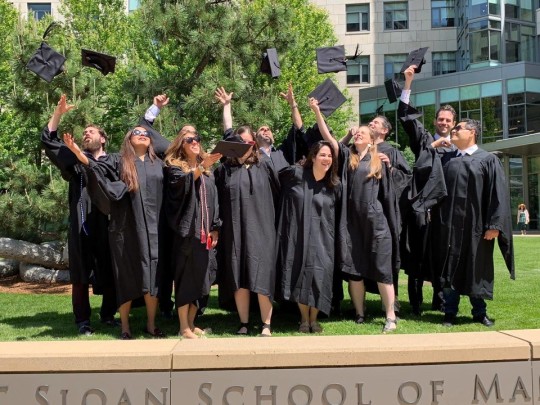An MIT Sloan MBA offers a world-class education. It transforms careers and opens doors to top leadership roles. Yet, this high-value degree comes with a significant price tag. The financial commitment can feel overwhelming for many bright, future leaders.
An MIT Sloan MBA is a substantial investment. Many students wonder how they'll manage such costs. The good news is, numerous scholarships and financial aid options exist. These programs aim to make a Sloan MBA more accessible. This article will show you how to find and secure these vital funds. We will explore scholarship types, eligibility, and smart application tactics. You will also learn tips for boosting your chances of getting financial support.
Understanding the Cost of an MIT Sloan MBA
Pursuing an MBA at MIT Sloan means planning for more than just tuition. You must consider all expenses that come with living in Boston. A full picture of costs helps you budget effectively.
Tuition and Fees
The core cost of your degree starts with tuition. Mandatory fees and student health insurance add to this sum. As of the 2023-2024 academic year, the estimated total cost of attendance for the MIT Sloan MBA program, including tuition and living expenses, is approximately $120,000 per year. This figure covers a full academic year. Remember, these numbers can change. Always check the official MIT Sloan financial aid website for the most current data.
Living Expenses and Other Costs
Beyond tuition, you'll have living costs. These include housing, food, and transportation. You'll also need money for books and personal items. Housing is often the largest non-tuition expense in the Boston area. Food costs vary depending on your habits. Transportation can include public transit passes or car expenses. A smart move is to create a detailed personal budget. This helps track where your money goes. It ensures you account for every potential cost during your MBA journey.
MIT Sloan MBA Scholarships: Types and Eligibility
MIT Sloan offers several scholarship programs. These help students from various backgrounds. Understanding each type is key to finding your best fit.
Merit-Based Scholarships
Merit scholarships recognize outstanding candidates. These awards are based on strong academic records. They also consider your professional experience and leadership potential. Your overall profile as an applicant plays a big part. MIT Sloan looks for students who show a history of impact and future promise. When applying, tailor your materials. Highlight achievements that match Sloan's values. Show how you've led, innovated, or made a difference. This strategy can truly boost your merit scholarship chances.
Need-Based Financial Aid
Need-based aid helps students with demonstrated financial need. This aid is determined by looking at your financial information. You typically submit forms detailing your income, assets, and expenses. The school assesses your capacity to pay. To apply for federal aid, you usually complete the Free Application for Federal Student Aid (FAFSA). Sloan may also have specific financial aid forms. Fill these out carefully and completely. Accurate information helps them assess your need fairly.
Diversity and Special Interest Scholarships
MIT Sloan values a diverse student body. Many scholarships target specific groups or interests. These might include women in business or underrepresented minorities. Some focus on students with specific industry goals, like entrepreneurship or technology. For example, a scholarship might support women pursuing tech leadership. Another could back global entrepreneurship efforts.
MIT Sloan's admissions office often states their commitment to diversity. They believe varied perspectives enrich the learning environment. Seeking scholarships that align with your unique background or career path can be very effective. Explore all options that fit your profile.
How to Apply for MIT Sloan MBA Scholarships
The scholarship application process at MIT Sloan is often streamlined. It links closely with your MBA admissions application. Knowing how to navigate this connection is crucial.
The Core Application Strategy
Most MIT Sloan scholarships tie into the main MBA application. This means there isn't always a separate scholarship form. Instead, your admissions application serves as your scholarship application. Review the admissions portal thoroughly. Look for sections asking about your financial needs or interests in specific scholarships. Pay attention to any checkboxes or prompts about funding. Many awards are granted based on your overall application. This means a strong MBA application is also a strong scholarship application.
Crafting a Winning Scholarship Essay
Essays are vital for showing your fit and need. You might write personal essays, short answers, or specific scholarship essays. These are your chance to explain your journey. Clearly state how a scholarship will help you achieve your MBA goals. Address the specific prompts given. Share unique experiences that highlight your strengths. Explain how the MBA will enable your future success. An authentic and compelling story can make a big impact. It helps the committee understand your potential and need.
Recommendations and Transcripts
Your recommenders can influence scholarship decisions. Strong letters of recommendation speak to your character and abilities. They can highlight your leadership, teamwork, or specific achievements. Your academic transcripts also matter. A solid academic record shows your capacity for rigorous study. Provide your recommenders with full details about your goals. Tell them which scholarships you are targeting. This helps them write a powerful, relevant letter on your behalf.
External Scholarship Opportunities
While MIT Sloan offers many scholarships, looking outside the school is smart. Many organizations provide funding for MBA students. These can be a great way to supplement your financial aid.
MBA-Specific Scholarships
Several external groups offer scholarships specifically for MBA candidates. Organizations like the Forté Foundation support women pursuing business degrees. The Reaching Out MBA (ROMBA) Fellowship helps LGBTQ+ leaders. The Consortium for Graduate Study in Management supports underrepresented minorities. These programs aim to boost diversity in leadership roles. For instance, the Forté Foundation Fellowship is a well-known example. It provides significant support to women entering top MBA programs. Research these groups early in your application process.
Industry and Background-Specific Scholarships
You might find scholarships tied to your field or personal background. These could come from professional associations in your industry. For example, groups for tech professionals or finance leaders might offer awards. Some scholarships target specific skills or interests. Think about organizations related to your past work or future career plans. Connecting with affinity groups related to your heritage or interests can also yield results. Dig deep into these niche opportunities.
Corporate Sponsorships
Some employers will help pay for your MBA. This is often called corporate sponsorship or educational assistance. Companies might invest in employees' higher education. They do this to develop future leaders. It can be a great win-win for both you and your employer. Talk to your human resources department early on. Ask about their policies for educational reimbursement or sponsorship. Some companies have formal programs. Others might be open to a direct proposal from you.
Maximizing Your Funding: Additional Tips and Strategies
Securing an MIT Sloan MBA scholarship takes effort. A strategic approach will greatly improve your chances. Follow these tips to maximize your funding.
Early Application and Deadlines
Scholarship deadlines are often strict. Many align with MBA admissions rounds. Applying early can give you an edge. Funds may be limited later in the admissions cycle. Understand all deadlines for both admissions and scholarships. Create a centralized spreadsheet. Track every scholarship name, deadline, and requirement. This keeps you organized and on schedule. Missing a deadline means missing an opportunity.
Networking and Information Gathering
Connect with people who know the system. Talk to current MIT Sloan students. They can share insights on how they funded their degrees. Alumni often have valuable advice. The admissions and financial aid offices are also great resources. Ask them specific questions about funding options. One MIT Sloan alumnus often says, "Our community thrives on connection. Don't hesitate to reach out for guidance, especially on navigating the financial aid process." Learning from others' experiences is invaluable.
Reapplication and Appeals
Sometimes, your initial scholarship application may not be successful. If possible, learn about the school's reapplication policies. You might be able to apply again in a subsequent year. If you don't receive the funding you hoped for, consider appealing. Some schools have processes for this. Seek feedback on your application if you can. This helps you improve future submissions. Every "no" can be a lesson for a future "yes."
Conclusion
An MIT Sloan MBA represents a significant investment in your future. While the cost is substantial, securing funding is absolutely attainable. Approach this process with a clear strategy and a detailed plan.
Success hinges on thorough research. It means tailoring your applications to highlight your unique value. It also means leveraging every available resource, both within MIT Sloan and externally. Start your funding research early. Approach each application with diligence. Understand your unique story and how it aligns with scholarship criteria. With careful planning, your dream of an MIT Sloan MBA can become a funded reality.


